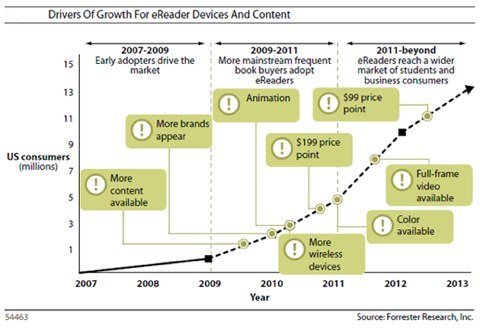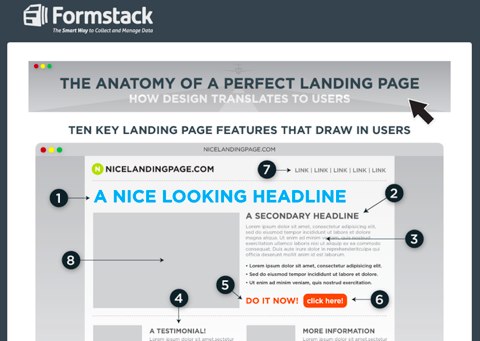
Do you have all the basics of branding in place, but you are still struggling to create even a dent in your competitor’s market share?
Most companies don’t get branding… and for the ones that do, it’s often not enough. But if you don’t figure out how to climb out of the clutter and ahead of your competition, your company will fail.
So what can you do? Study the following six companies and the branding lessons they learned as they overcame the obstacles in their markets.
Lesson #1: Start with why
Too often companies start their branding journey by building a product they hope will change people’s lives. They've spent thousands of hours in research and development on an idea, but when they ship, the product flops.
Let’s look at Apple to learn why that is. Instead of the typical what-how-why advertising message, Apple has always promoted the why first. They've promoted the reason behind why they exist. You can imagine them saying this: “Apple exists to challenge the status quo. We emphasize beautiful design. And we make computer devices.”
That’s totally different than if they said, “Apple makes computer devices. They are beautifully designed. We exist to challenge the status quo.”
One starts with the why…the other one ends with the why. This is one of the reasons that Apple is innovative year-after-year and is one of the biggest companies in the world.
In fact, they've been trading places as “world’s biggest company” with Exxon for the last several months.
Apple established a movement based on their why and created a following. They enhance the deal by creating beautiful and useful products… so sales rush in year after year.
The lesson is that when everyone involved… from the founder all the way down to the customer… knows exactly why your company exists, then you create a meaningful way for people to see your brand, instead of just another company wanting to make millions.
So, what is your company’s why?
Lesson #2: Never forget the past
In today’s startup economy, most companies don’t have a lot of history since they are younger than four years or so. But if you’re company is only ten years old, it’s dangerous to forget your past when you are planning for the future.
Let me show you what I mean.
The company Blinds.com tries to stay rooted to their history in a number of ways:
- They hung streets signs from the ceiling with the names of the city/street of all their offices. This even includes the addresses of companies they’ve bought.
- They named one of their meeting rooms “Laura” since the business started as a brick-and-mortar business called “Laura’s.”
- They named another meeting room after their first website they started back in 1996: NoBrainerBlinds.com.
- They named yet another meeting room after their first real location. That meeting room is called “The Alley.”
- They displayed all of the articles written about the company during it’s 16 years of being in business.
If you are part of a company with history it’s important you understand that history and communicate it to all of your employees.
And don’t forget, that foundation includes the why behind your history—it reflects who you are. Neglect to communicate your history and you threaten to weaken a powerful tool to strengthen your brand.
Lesson #3: Create your own market
Jumping into an existing market can be near-impossible. If it’s a competitive or shrinking market you may never succeed. If you truly want to succeed, you need to create your own market.
Way back when e-readers were nothing but a fuzzy concept, Amazon jumped into the market giving early adopters something to play with:

A lot of people felt like they were stupid for taking such a risky move, but they aren’t saying that now with the rise of the e-reader.
And even though the Kindle Fire didn’t turn out to be as great as people hoped and publishers and libraries continue to give Amazon trouble about their privacy and pricing policies, there is no doubt that Amazon… because they created their own market… will dominate it.
What’s the lesson for you? Look for markets like you were a value investor… find markets that are under-valued but have promising growth.
Lesson #4: Rebrand to avoid confusion
When some companies branch out into two or more business lines instead of one, they often run into problems. The problem arises when their name doesn't fit the new line of business.
This is kind of what happened to Formspring, a company that launched a popular social media product that attracted a different user base than its form-building product that is more geared to businesses.
It was easy to cause confusion between the two products so the company decided to re-brand itself. That’s not an easy task since the former name was pretty popular among the costumers.
What the company decided to do was create an infographics that taught users how to create the perfect landing page with their new brand.

The key to success was that they made something that educated their customer. In the end, more than 100,000 people shared the infographics through StumbleUpon in the last year.
What can you learn from this lesson? Try to make your products as distinct from each other as possible. And if you do end up with brand confusion, don’t be afraid to re-brand.
Lesson #5: Create an awesome user experience
Most products will be so similar to each other that you need to figure out a way to make them very different. And one of the easiest and less-expensive ways to do that is by creating an awesome user experience. It doesn’t matter if you are selling mopeds or haircuts, you need to make your customers feel like every interaction with you is what makes youdifferent.
Look at the iPhone and how it entered into a crowded market. Cell phones were all basically the same before Apple entered the market. Because Apple’s why is built around “challenging the status quo” they created a user experience that absolutely blew away the competition.
This all started with the iPod. Apple floated a minimum viable productout into the market to see how it would be responded to. People went crazy over the iPod so Apple figured that the iPhone, which would cost more to create, wouldn’t be such a gamble. They were right.
How can you create an awesome user experience? Start by looking at the customers of your competitor and see what they are missing from their experience. And the nice thing about user experience is you can go after big competitors without having their deep pockets.
Lesson #6: Stay edgy
You would never think that a 216-year old whiskey company would try to go after the women’s market, but that’s exactly what Jim Beam did.
The company wants to get more nimble and act like a start-up rather than a huge company. The key to making that change was looking into a market that most of their competitors were neglecting.
| Check this out too |
What was that market? It was women. Most of the big spirits companies did not give any attention to women, even with products like vodka where women made up half of the market. The thinking was to advertise to the men and the women will follow. In order to stay edgy, Jim Beam decided to treat them as a profitable market.
What the company ended up doing was adding more brands to their product lines, including a margarita variety called Bethenny Click Here! that’s a number one selling brand.
